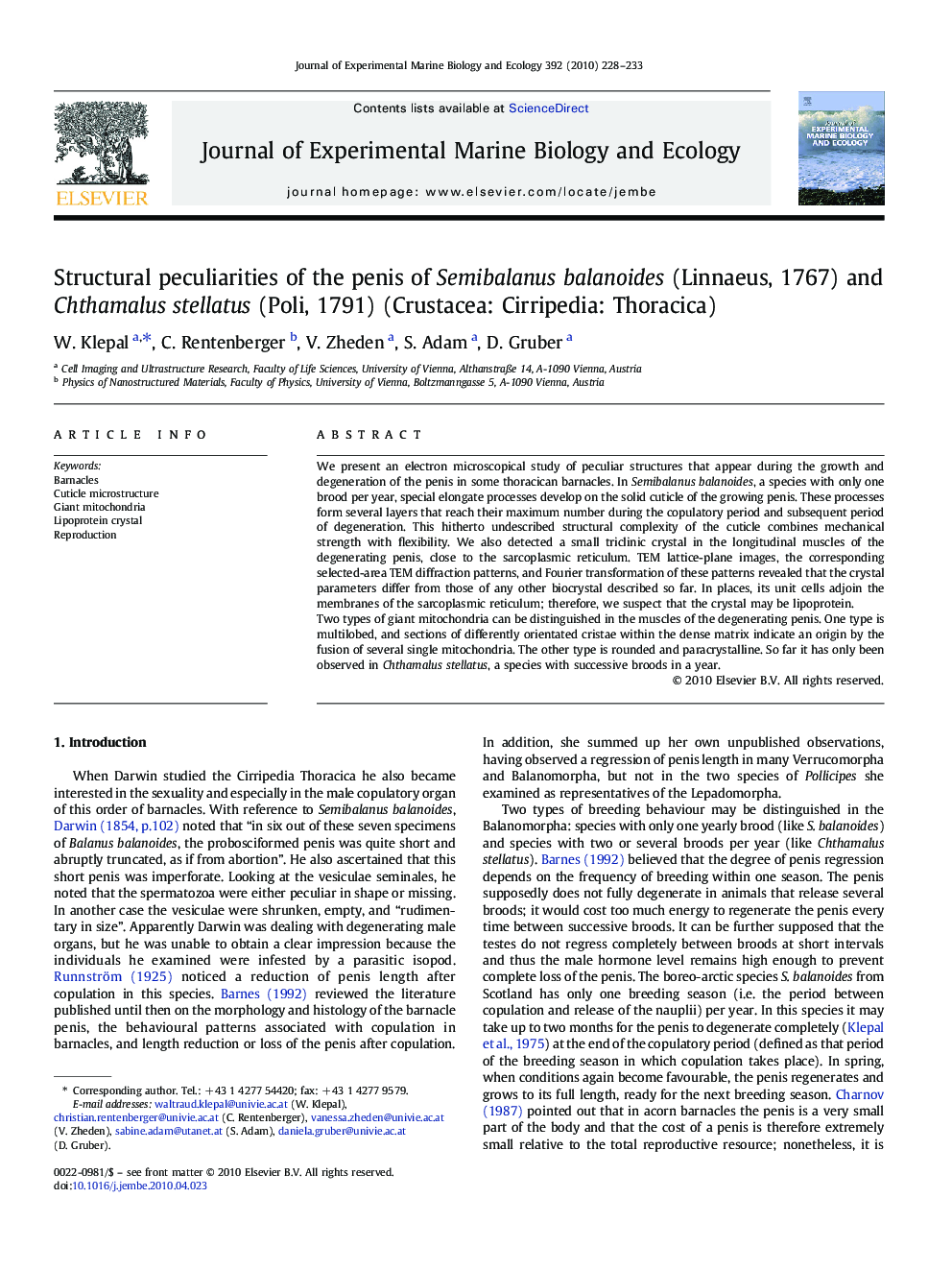| Article ID | Journal | Published Year | Pages | File Type |
|---|---|---|---|---|
| 4396569 | Journal of Experimental Marine Biology and Ecology | 2010 | 6 Pages |
We present an electron microscopical study of peculiar structures that appear during the growth and degeneration of the penis in some thoracican barnacles. In Semibalanus balanoides, a species with only one brood per year, special elongate processes develop on the solid cuticle of the growing penis. These processes form several layers that reach their maximum number during the copulatory period and subsequent period of degeneration. This hitherto undescribed structural complexity of the cuticle combines mechanical strength with flexibility. We also detected a small triclinic crystal in the longitudinal muscles of the degenerating penis, close to the sarcoplasmic reticulum. TEM lattice-plane images, the corresponding selected-area TEM diffraction patterns, and Fourier transformation of these patterns revealed that the crystal parameters differ from those of any other biocrystal described so far. In places, its unit cells adjoin the membranes of the sarcoplasmic reticulum; therefore, we suspect that the crystal may be lipoprotein.Two types of giant mitochondria can be distinguished in the muscles of the degenerating penis. One type is multilobed, and sections of differently orientated cristae within the dense matrix indicate an origin by the fusion of several single mitochondria. The other type is rounded and paracrystalline. So far it has only been observed in Chthamalus stellatus, a species with successive broods in a year.
